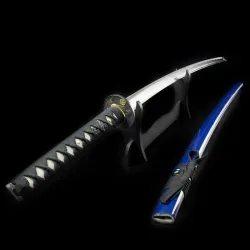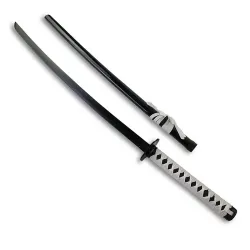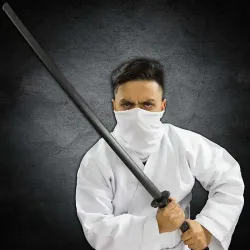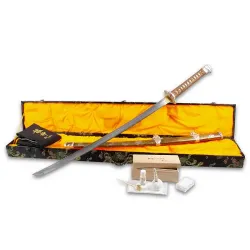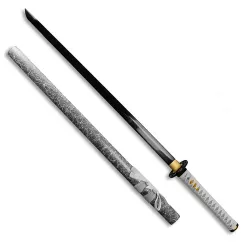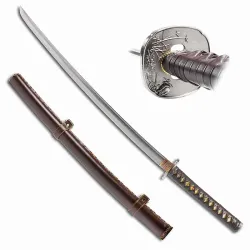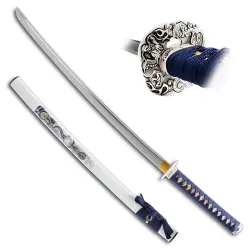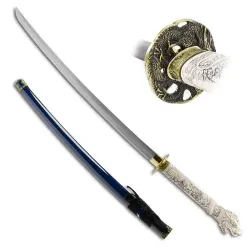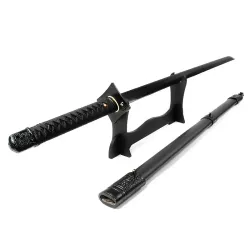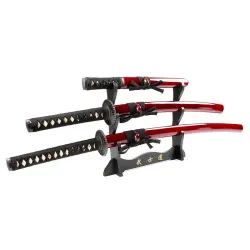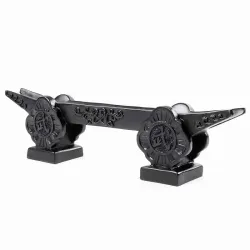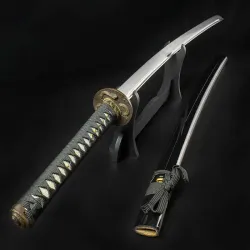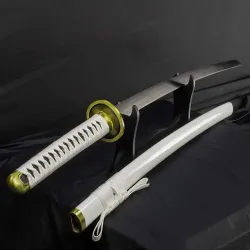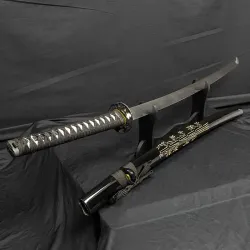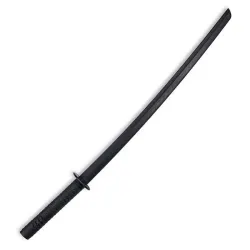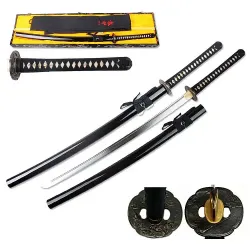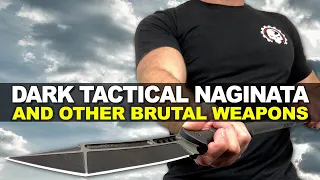Authentic Samurai Swords & Japanese Katana Blades
-
$299.95
-
$129.95
-
$119.95
-
$184.95
-
$184.95
-
$94.95
-
$199.95
-
$139.95
-
$149.95
-
$239.95
-
$59.95
-
$189.95
-
$119.95
-
$119.95
-
$119.95
-
$134.95
-
$229.95
-
$159.95
-
$249.95
-
$159.95
-
$129.95
-
$259.95
-
$119.95
-
$109.95
-
$169.95
-
$199.95
-
$129.95
-
$129.95
-
$129.95
-
$129.95
-
$139.95
-
$129.95
-
$129.95
-
$114.95
-
$119.95
-
$109.95
-
$92.95
-
$94.95
-
$104.95
-
$149.95
-
$169.95
-
$129.95
-
$179.95
-
$149.95
-
$104.95
-
$114.95
-
$179.95
-
$134.95
-
$129.95
-
$139.95
-
$59.95
-
$179.95
-
$109.95
-
$129.95
-
$129.95
-
$139.95
-
$134.95
-
$119.95
-
$199.95
-
$129.95
-
$109.95
-
$119.95
-
$164.95
-
$249.95
-
$134.95
-
$99.95
-
$119.95
-
$144.95
-
$134.95
-
$199.95
-
$109.95
-
$69.95
-
$399.95
-
$129.95
-
$139.95
-
$119.95
-
$109.95
-
$149.95
-
$99.95
-
$99.95
-
$199.95
-
$23.95
-
$299.95
-
$279.95
-
$89.95
-
$109.95
-
$49.95
While the katana is the most recognizable of all samurai swords, it is only one part of a broader tradition. A full samurai sword set, known as a daisho, includes both the long katana and the shorter wakizashi. The katana was used in open combat, prized for its ability to cut cleanly through armor and bamboo alike, while the wakizashi was carried for close-quarters fighting or ceremonial use. Together, these swords represented a samurai's social status and served as an extension of their spirit and discipline.
Each authentic samurai sword begins as a raw piece of steel that is repeatedly folded, hammered, and refined to create a blade of extraordinary sharpness and strength. The process produces a visible grain pattern known as the hamon, a wavy line that runs along the blade and reveals the contrast between the hardened edge and the flexible spine. This delicate balance of hardness and resilience is what gives a katana its legendary cutting ability. Whether for martial arts practice, historical collection, or elegant display, a well-forged Japanese sword offers a connection to centuries of tradition and skill.
Collectors and martial artists alike continue to admire the craftsmanship of samurai swords because each blade tells a story of dedication and heritage. The act of drawing, cleaning, and caring for a katana is as much a ritual as it is maintenance, reflecting the respect that these swords command. Modern reproductions crafted by skilled swordsmiths can still capture the same visual and functional beauty found in the originals. Whether displayed in a dojo, carried during a martial arts demonstration, or kept as a treasured heirloom, a true samurai sword serves as a bridge between history and artistry.
Types of Samurai Swords
Although the katana is the most recognized Japanese sword, samurai carried more than one blade. The traditional daisho set included the katana and wakizashi, symbolizing both strength and honor. The wakizashi was used for indoor fighting or close defense when the longer katana was impractical. The third common blade, the tanto, served as a utility knife or backup weapon. Some samurai also used the nodachi, a massive two-handed sword designed for open battlefields. Each sword type served a specific purpose, reflecting the samurai's adaptability and mastery of multiple fighting styles.
Craftsmanship and Materials
True samurai swords are works of art as much as they are weapons. Traditional swordsmiths used high-carbon steel that was folded and hammered repeatedly to remove impurities and enhance flexibility. This ancient process produced a razor-sharp edge that could cut with precision while maintaining durability. Modern sword makers still follow these time-honored methods, combining them with advanced metallurgy to produce blades that rival their historical counterparts. The finest swords feature a visible hamon line, ray-skin wrapped handles, and fittings inspired by Japan's feudal era.
Choosing a Samurai Sword for Display or Practice
When selecting a samurai sword, it helps to know whether you plan to use it for training, cutting practice, or display. Collectors and martial artists often prefer high-carbon or folded steel blades because of their strength and authenticity. These swords can be sharpened for cutting exercises, known as tameshigiri, or displayed as centerpiece collectibles. Decorative swords, while visually striking, are better suited for display in a dojo, office, or home collection. Each sword in our selection is crafted for balance, beauty, and purpose, allowing you to choose the perfect piece for your needs.
Samurai Swords at KarateMart
At KarateMart.com, we offer a carefully curated selection of samurai swords, Japanese katana, wakizashi, and tanto blades. Every piece is built to capture the precision and spirit of Japan's ancient sword-making tradition. Whether you're seeking a battle-ready katana for training or a traditional samurai sword to enhance your collection, you'll find options that combine strength, artistry, and heritage. Each blade reflects the timeless legacy of the samurai, a symbol of courage, honor, and craftsmanship that continues to inspire today.
What Are the Different Types of Samurai Swords?
Samurai swords come in several traditional forms, each designed for a specific use in battle or ceremony.
The three most common types are the katana, wakizashi, and tanto. The katana is the iconic long sword with a curved, single-edged blade used in open combat. The wakizashi is shorter and served as a companion blade for close fighting or ritual use. The tanto is a dagger-sized weapon used for self-defense or as a last resort in combat. Some samurai also used larger swords like the nodachi or odachi, designed for open battlefields. Together, these weapons reflected the samurai's discipline, rank, and mastery of multiple fighting styles.
What Is the Difference Between a Katana and a Samurai Sword?
A katana is a specific type of samurai sword, but not every samurai sword is a katana.
The term samurai sword refers to any traditional Japanese sword used by the samurai, including the katana, wakizashi, and tanto. The katana is the most famous of the three, known for its curved blade, two-handed grip, and exceptional cutting power. It typically measures around 40 inches in total length and was worn edge-up for quick draws. In contrast, the term samurai sword can describe the entire family of blades carried by samurai warriors. In other words, the katana is the centerpiece of the samurai sword tradition, but it's only one part of the complete set known as the daisho.
Are Real Samurai Swords Still Made in Japan Today?
Yes, authentic samurai swords are still made in Japan by licensed swordsmiths using traditional forging techniques.
Modern Japanese swordsmiths, known as t??sh??, continue to create genuine samurai swords following methods that have been passed down for centuries. Each sword is handmade using high-carbon steel that is folded, tempered, and polished through an intensive process lasting weeks or even months. These blades are often registered with the Japanese government as cultural artifacts and can only be produced by smiths who hold official certification. Because of this, genuine Japanese-made samurai swords are rare and expensive, often collected as art pieces or used in traditional martial arts like iaido and kendo kata. High-quality replicas inspired by these same techniques are available worldwide, offering similar balance and craftsmanship at a more accessible price.
What Makes a Katana Blade So Sharp?
A katana's legendary sharpness comes from the unique forging and heat-treating methods used by Japanese swordsmiths.
Each blade begins as high-carbon steel that is folded and hammered repeatedly to remove impurities and create multiple layers of metal. This process strengthens the sword while maintaining flexibility. The edge is then clay-tempered, a technique that hardens the cutting surface while leaving the spine slightly softer. This difference in hardness gives the katana its razor-sharp edge and prevents it from breaking under pressure. The final step is a meticulous hand polishing that reveals the blade's natural hamon line and enhances its ability to slice cleanly through targets like bamboo or tatami mats. When forged properly, a katana's sharpness rivals that of any blade in the world.
Can You Use a Samurai Sword for Martial Arts Training?
Yes, many martial artists still use samurai-style swords for traditional Japanese sword training and cutting practice.
In arts like iaido, kenjutsu, and kendo kata, practitioners train with real or replica samurai swords to develop precision, control, and discipline. For safety, students often start with a blunt-edged sword called an iaito before progressing to a sharpened blade for tameshigiri (test cutting). A properly balanced katana made from high-carbon steel can be used for realistic practice, but the sword must be well-maintained and handled with care. Training with a samurai sword emphasizes focus and respect, mirroring the traditional mindset of the samurai warrior.
Are Samurai Swords Battle Ready?
Some samurai swords are battle ready, while others are designed purely for display or ceremonial purposes.
A battle-ready samurai sword is made from high-carbon or folded steel and is fully functional, with a sharpened edge, durable tang, and solid construction meant for real cutting performance. These swords are often heat-treated, full-tang, and balanced for practical use in martial arts or test cutting. In contrast, decorative samurai swords use stainless steel or lower-quality materials and are intended only for display. Before purchasing, it's important to check whether a sword is labeled as "functional," "battle ready," or "for display" to ensure you're getting the right type for your intended use.
What Materials Are Used to Make Samurai Swords?
Traditional samurai swords are made from high-carbon steel, carefully forged and folded to create strength, flexibility, and a sharp cutting edge.
Historically, Japanese swordsmiths used a type of steel called tamahagane, which was produced by smelting iron sand in a clay furnace. This material was repeatedly folded and hammered to remove impurities and form thousands of microscopic layers, giving the sword both durability and beauty. Modern functional katanas often use steels like 1060, 1095, or T10 high-carbon steel for a similar balance of hardness and flexibility. The handle is usually wrapped with ray skin and braided silk or cotton for grip, while the fittings are made of brass, copper, or iron. Together, these materials produce a sword that is both elegant and battle ready.
How Can You Tell If a Samurai Sword Is Real or Fake?
A real samurai sword is hand-forged from high-carbon steel with a full tang, while fake or decorative swords are usually made from stainless steel or cheap alloys.
Authentic samurai swords have a visible hamon line that forms naturally during the tempering process, not one that is etched or painted on. The blade will typically have a subtle grain pattern from being folded multiple times, and the handle will be secured with bamboo pegs called mekugi, not glued or welded. Real swords also feel balanced, with most of the weight near the handle rather than the tip. In contrast, replica or decorative swords often have welded tangs, shiny chrome finishes, and lightweight construction intended only for display. Checking the steel type, tang construction, and overall craftsmanship is the best way to tell whether a samurai sword is truly functional or just ornamental.
What Is the Meaning of the Hamon on a Katana Blade?
The hamon is the visible line on a katana that shows where the edge was hardened during the tempering process.
During forging, swordsmiths coat the blade with clay before heating and quenching it. A thinner clay layer is applied to the cutting edge, causing it to cool and harden faster than the thicker-coated spine. This difference in cooling creates a strong yet flexible sword and leaves behind a wavy pattern known as the hamon. Beyond its practical purpose, the hamon also reflects the craftsmanship and style of the swordsmith, with each pattern being unique. A genuine hamon is a natural part of the blade, while imitation swords often have fake or etched lines meant to mimic the look of a real one.
What Is a Daisho Set?
A daisho set refers to the traditional pair of swords carried by samurai warriors, a katana and a wakizashi.
The word daisho literally means "big-little," symbolizing the balance of power and honor in the samurai code. The longer sword, the katana, was used in open combat, while the shorter wakizashi served as a companion blade for close fighting or ceremonial use. Together, they represented the samurai's status and personal identity. A true samurai was never without both weapons, which were worn edge-up through the belt, allowing for quick and precise draws. Many collectors and martial artists still display daisho sets today to honor the legacy of Japan's warrior tradition.
Are Samurai Swords Legal to Own in the United States?
Yes, samurai swords are legal to own in most parts of the United States, though local laws can vary by state or city.
In general, adults may legally purchase, own, and display samurai swords without special permits. However, some states and municipalities have restrictions on carrying or concealing swords in public. For example, while it is legal to display or transport a sword for martial arts training or collection purposes, carrying one openly in public could violate local weapon ordinances. It is always best to check local regulations before carrying a sword outside your home or dojo. When stored or displayed responsibly, owning a samurai sword is completely lawful in nearly every state.
How Should I Care for or Maintain My Samurai Sword?
Proper care keeps a samurai sword sharp, rust-free, and visually stunning for years to come.
To maintain your sword, always handle it with clean, dry hands and avoid touching the blade directly, since skin oils can cause corrosion. After use, lightly wipe the blade with a soft cloth to remove moisture or debris. Apply a thin layer of choji oil or light mineral oil to prevent rust, especially if the sword will be stored for long periods. Keep your samurai sword in a dry environment, ideally displayed horizontally with the edge facing upward to protect the blade. For long-term preservation, traditional sword care kits include rice paper, uchiko powder, and oil for routine cleaning. Taking time to maintain your sword not only preserves its beauty but also honors the craftsmanship behind it.
What Is the Best Way to Store a Katana or Wakizashi?
The best way to store a katana or wakizashi is horizontally in its scabbard, with the edge facing upward to protect the blade.
Storing the sword edge-up prevents the sharpened side from resting against the inside of the scabbard, which helps preserve the polish and cutting edge. Keep the sword in a dry, temperature-controlled environment, away from humidity or direct sunlight. If you live in a humid area, apply a thin coat of light oil such as choji oil to the blade before storage to prevent rust. When displaying your sword, use a sturdy stand that supports both the handle and the scabbard evenly. Whether stored in a display rack or a storage box, proper positioning and regular inspection will ensure your sword remains in excellent condition for years to come.
What Is the Purpose of the Curve in a Samurai Sword?
The curve of a samurai sword allows smoother, more powerful cutting motions and easier drawing from the scabbard.
Unlike straight blades, a curved katana slices rather than chops, which creates a cleaner and more efficient cut. The gentle curve, known as the sori, helps the sword glide through targets with minimal resistance. It also makes the blade easier to draw quickly during an iaido technique, where speed and precision are critical. The curve improves balance and handling, allowing the sword to feel lighter and more responsive in motion. Both functional and elegant, the curvature of the katana is one of the key reasons it became Japan's most effective and recognizable weapon.
How Are Samurai Swords Used in Modern Martial Arts?
Samurai swords are still used in traditional Japanese martial arts to teach precision, discipline, and proper sword technique.
Modern practitioners study arts such as iaido, kenjutsu, and kendo kata, which all trace their roots to the combat skills of the samurai. In iaido, students practice drawing and sheathing the sword with smooth, deliberate movements. Kenjutsu focuses on combat techniques and controlled sparring, while tameshigiri involves test cutting on bamboo or rolled mats to refine accuracy and power. Most training begins with an unsharpened iaito before progressing to a live blade. These arts preserve the spirit of the samurai by blending physical skill with mental focus and respect for the weapon.
What Is the Difference Between a Wakizashi and a Tanto?
The wakizashi and tanto are both short Japanese swords, but they differ in size, purpose, and how they were used by the samurai.
A wakizashi typically measures between 12 and 24 inches in blade length and was worn alongside the katana as part of the traditional daisho set. It served as a companion weapon for close combat, indoor defense, and ceremonial purposes. The tanto, on the other hand, is smaller, usually less than 12 inches long, and shaped more like a dagger or knife. It was primarily used for self-defense, finishing strikes, or as a utility blade. While both weapons share the same curved, single-edged design as the katana, the wakizashi represents status and tradition, while the tanto was valued for practicality and concealment.
Why Were Samurai Swords Considered Sacred to the Samurai?
Samurai swords were viewed as sacred because they symbolized the warrior's honor, spirit, and connection to the divine.
To the samurai, the sword was more than a weapon; it represented their soul. A finely crafted katana embodied discipline, loyalty, and the moral code known as Bushido. Many samurai believed their sword carried spiritual energy, linking them to their ancestors and the gods. Losing or damaging one's sword was considered a deep disgrace. The forging process itself was treated as a ritual, often accompanied by prayers and purification ceremonies. This spiritual reverence is why samurai swords are still respected today as cultural treasures and symbols of integrity and devotion.
Can a Samurai Sword Cut Through Armor or Other Metals?
A well-forged samurai sword can cut through certain types of armor, but not solid metal plates or heavy modern materials.
Samurai swords were designed to slice through flesh, bone, and light armor such as leather, bamboo, or iron scales. Against thick steel or full plate armor, even a sharp katana would lose its edge or bend from the impact. Instead of brute force, samurai relied on technique, precision, and striking at weak points in an opponent's armor. While the katana is one of the most effective cutting weapons ever made, it was never meant to chop through solid metal objects. Properly used, however, it remains capable of devastatingly clean cuts against unarmored or lightly protected targets.





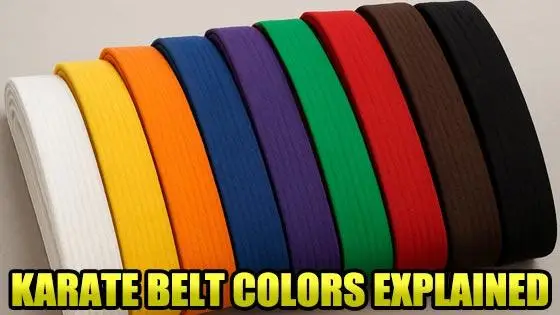

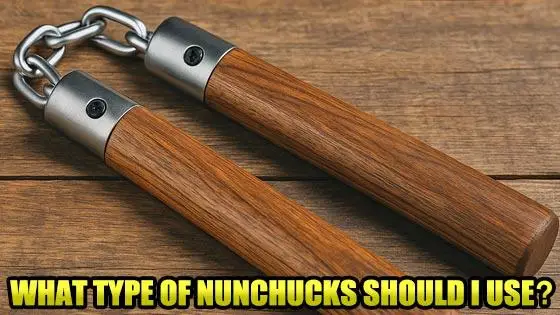

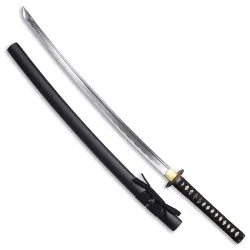

 (2)
(2)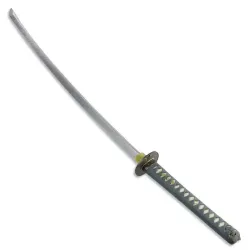

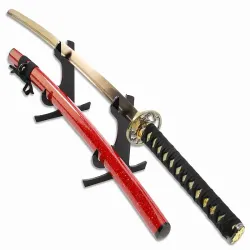
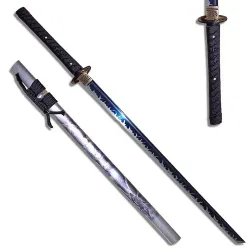
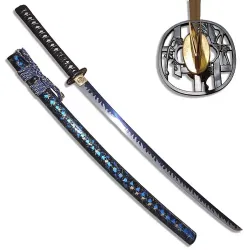
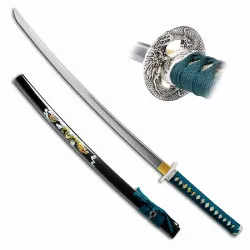

 (1)
(1)
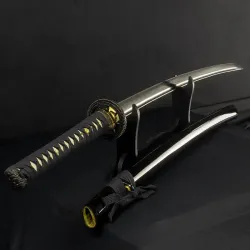
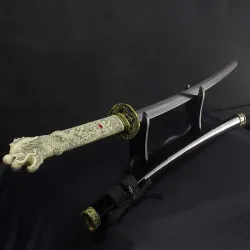
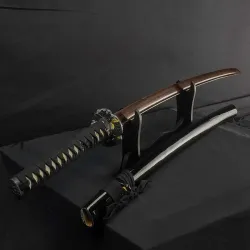
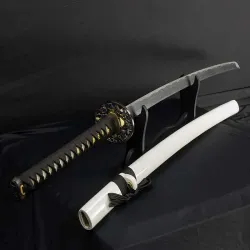
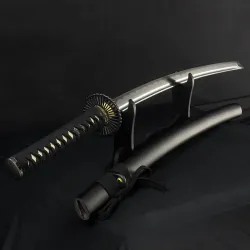
 (2)
(2)
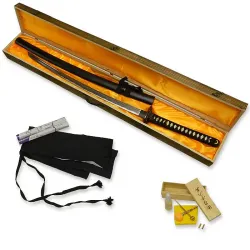
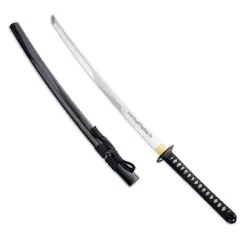
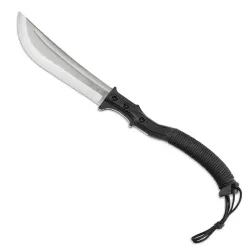
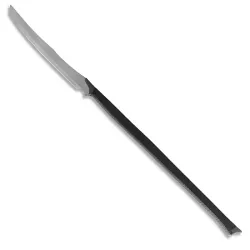

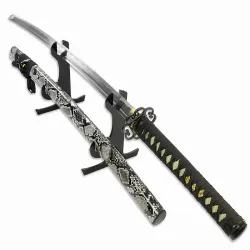
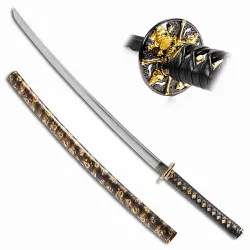

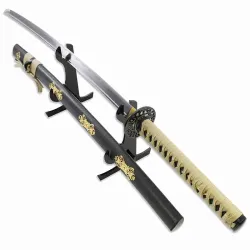

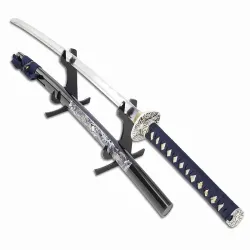
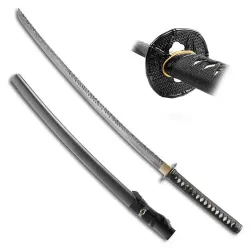
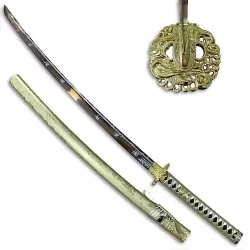

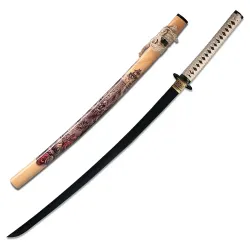
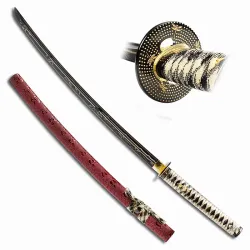
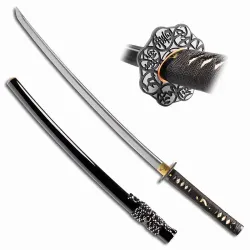
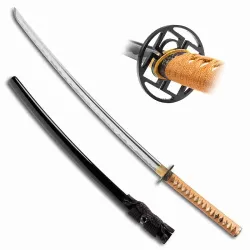
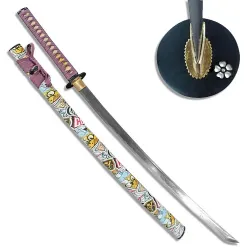
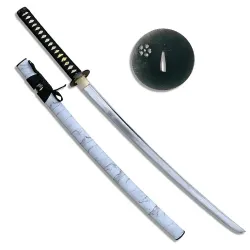
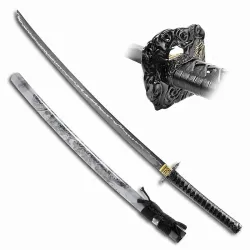
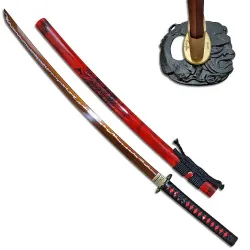
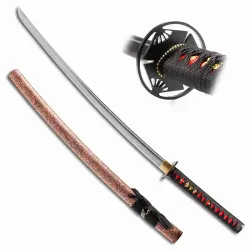
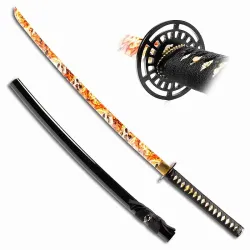
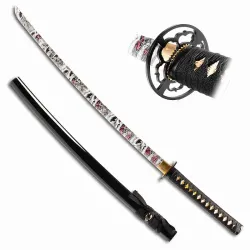
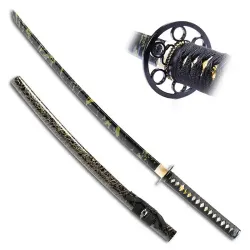

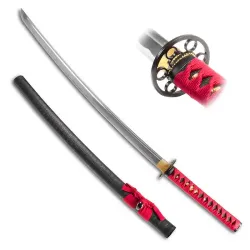

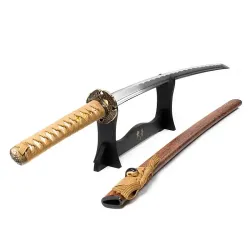





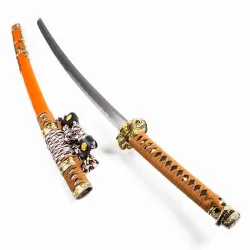
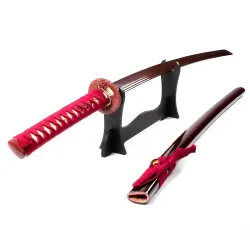


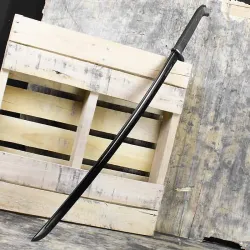


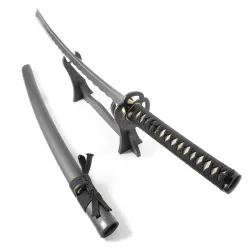
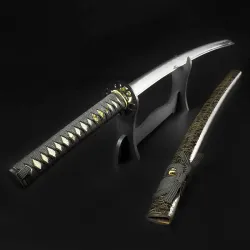



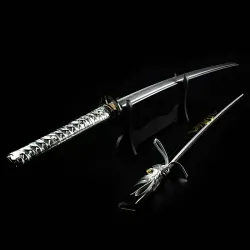


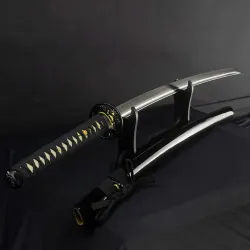




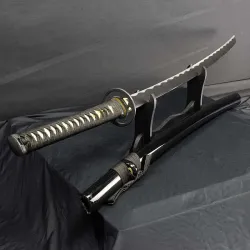
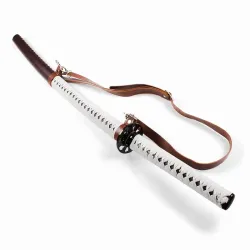

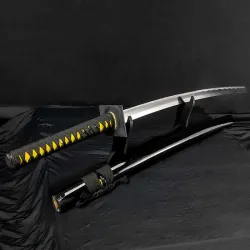
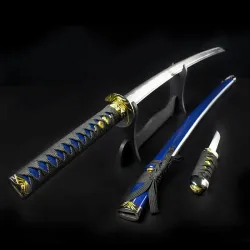

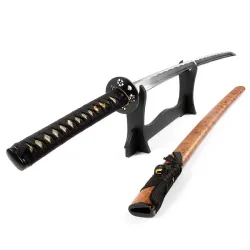
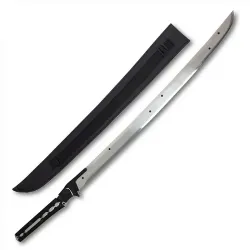
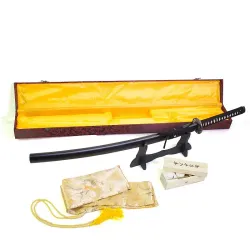

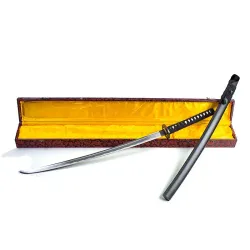
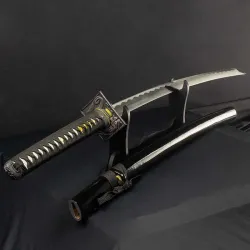

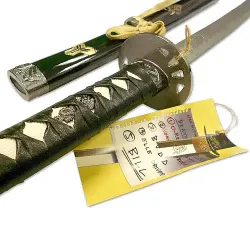
 (1)
(1)


